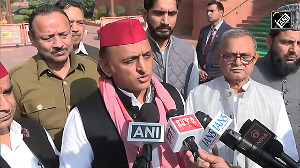Cities like Aurangabad (Maharashtra), Shillong (Meghalaya), Jabalpur (Madhya Pradesh), Rajkot (Gujarat) and Kharagpur (West Bengal) have seen the sharpest increase in consumer prices in the first seven months of the current calendar year.
In comparison, metros are much better off.
This conclusion is borne out by an analysis of the Consumer Price Index (urban non-manual employees) data for January to July 2007. The figures were provided by the Central Statistical Organisation for 59 urban centres in the country.
Increase in consumer price during January-July 2007
|
All-India |
Cities facing highest rise |
January-July, 2007 | |
|
1 |
Aurangabad |
11.3 | |
|
2 |
Shillong |
11.15 | |
|
3 |
Jabalpur |
9.82 | |
|
4 |
Rajkot |
9.71 | |
|
5 |
Kharagpur |
9.62 | |
|
Metros |
January-July, 2007 | ||
|
Kolkata |
7.5 | ||
|
Mumbai |
7.11 | ||
|
Chennai |
6.95 | ||
|
Delhi |
5.45 | ||
|
(Source: CSO) | |||
Except for Kolkata, with an average increase in consumer prices of 7.5 per cent, the other three metros faced an increase in consumer prices below the national average of 7.1 per cent.
The data show that most cities witnessing high consumer prices are in North India. Among the cities in the South, only Warangal (9.34 per cent) and Hyderabad (9.2 per cent) experienced high prices.
"This is due to diversion of commodities to the metros from second-tier cities," said V Shunmugam, chief economist, Multi Commodity Exchange of India (MCX).
"Initially, the rise was fueled by higher crude oil prices and inflation was concentrated in the metros. But slowly, it started passing on to second-tier cities. It also shows the robustness of information technology, where a trader chooses a metro to sell his commodities as the payment system is much more efficient in such cities," Shunmugam added.
"What seems to be making a difference are food prices. It is unlikely that housing and transportation cost is driving inflation in smaller cities. The better supply network in urban areas could be working in favour of the metros," said Shashank Bhide, senior fellow, National Council for Applied Economic Research (NCAER).
However, Shunmugam said this was a temporary phenomenon. "Soon, the price difference between the top- and second-tier cities will only be the transportation cost between the two locations."






